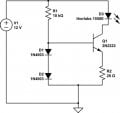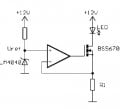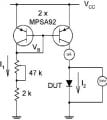Hi,
I am designing a circuit where the output current will be from 500mA and up
I would like to have a constant current of 1A at max
What would be the best way to attack this problem? is there any IC I can use to achieve this limiting of the current with a constant voltage?
Best regards
I am designing a circuit where the output current will be from 500mA and up
I would like to have a constant current of 1A at max
What would be the best way to attack this problem? is there any IC I can use to achieve this limiting of the current with a constant voltage?
Best regards

















